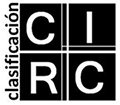Evaluation of the use of Instagram for the learning and teaching of selected phraseological units in English as a foreign language (EFL)
DOI:
https://doi.org/10.18002/ehf.i46.8331Keywords:
False friends, phrasal verbs, idioms, visual resources, Instagram, learning and teaching english as a foreign languageAbstract
Throughout this research, we will focus on the use of Instagram as a tool for learning specific phraseological units employing visual resources. The main objective is to discover -as well as delve into- the potentialities of this social network concerning its use for a completely online learning practice of false friends, phrasal verbs, and idioms. To achieve this objective, we conduct a single-group and mixed-method research.
Downloads
Métricas alternativas
References
Beyranvand, S. y Rahmatollahi, M. (2021): “The Effects of MALL on Language Learners’ Mastery of Technical Collocation: Use of Instagram and Adobe Connect”. Turkish Journal of Computer and Mathematics Education, 12(11), 6697-6709. https://www.proquest.com/docview/2639754532 .
Chévez Herra, R. (2013): “Phrasal Verbs: Their Teaching and Acquisition”. Revista de Lenguas Modernas, 19, 487-509.
Erarslan, A. (2019): “ Instagram as an Education Platform for EFL Learners”. TOJET: The Turkish Online Journal of Educational Technology, 18(3), 54-69.
Gómez-Ortiz, M.J., Romero, E. y Bobkina, J. (2023): “Instagram as a learning tool to improve technical vocabulary for sports science students”. Journal of Hospitality, Leisure, Sport & Tourism Education, 32, 1-8. https://doi.org/10.1016/j.jhlste.2022.100416.
Gonulal, T. (2019): “The Use of Instagram as a Mobile-Assisted Language Learning Tool”. Contemporary Educational Technology, 10(3), 309-323. https://doi.org/10.30935/cet.590108.
Khamesian, M. (2019): “On the Role of Phraseological Units in Teaching English as a Foreign Language to Adult Learners”. Armenian Folia Anglistika, 15(2 (20), 56–63. https://doi.org/10.46991/AFA/2019.15.2.056.
Lailiyah, M. y Setiyaningsih, L. (2020): “Students’ perception of online communication language learning through Instagram”. EnJourMe, 5(2). 188-195. http://dx.doi.org/10.26905/enjourme.v5i2.5202.
Marashi, H. y Maherinia, E. (2011): “The Effect of Teaching Phrasal Verbs through Pictures on EFL Learners’ Active Application of Phrasal Verbs in Speaking”. i-manager’s Journal on English Language Teaching, 1(2), 37-44. http://dx.doi.org/10.26634/jelt.1.2.1459.
Mehrpour, S. y Mansourzadeh, N. (2017): “English Idioms and Iranian Beginner Learners: A Focus on Short Stories and Pictures”. The Reading Matrix: An International Online Journal, 17(1), 97-111.
Mena Martínez, F. M., y Strohschen, C. (2020): “Introduction. Phraseology: what lies ahead”. En F. M. Mena Martínez, y C. Strohschen, Teaching and Learning Phraseology in the XXI Century: Challenges for Phraseodidactics and Phraseotranslation (pp. 9-15). Berlin: Peter Lang GmbH.
Messina Fajardo, L. A. (2017): Apuntes de fraseología, paremiología, traducción y didáctica del español. Barcelona: Avant editorial.
Rayuningtya, P. y Fitriani, I. (2021): “INSTAGLISH: WHEN INSTAGRAM IS BEYOND ONLINE PHOTO-SHARING PLATFORM TO INDUCE YOUR ENGLISH”. ETERNAL (English, Teaching, Learning, and Research Journal), 7(1), 1-23. https://doi.org/10.24252/Eternal.V71.2021.A1.
Roca Varela, M. L. (2011): “Teaching and learning “false friends”: a review of some useful resources”. Encuentro, 20, 80-87.
Rovira-Esteva, S. y Vargas-Urpí, M. (2023): “From the Traditional Classroom to Mobile Microlearning: Analysing the Potential of Instagram for Chinese Language Learning”. Sinologia Hispanica, China Studies Review, 16(1), 1-26.
Solhi Andarab, M. y Rouhi, A. (2014): “Let’s Replace Words with Pictures: The Role of Pictures and Spatial Intelligence in Learning English Idioms”. Theory and Practice in Language Studies, 4(2), 244-254. http://dx.doi.org/10.4304/tpls.4.2.244-254.
Tugrul Mart, C. (2012): “How to Teach Phrasal Verbs”. English Language Teaching, 5(6), 114-118. https://doi.org/10.5539/elt.v5n6p114
Vasiljevic, Z. (2015): “Effects of Etymology and Pictorial Support on the Retention and Recall of L2 Idioms”. Electronic Journal of Foreign Language Teaching, 12(1), 35-55.
Downloads
Published
How to Cite
Issue
Section
License
Copyright (c) 2024 Manuel Galián Peñalver

This work is licensed under a Creative Commons Attribution-NonCommercial-ShareAlike 4.0 International License.
Los autores o autoras que publican en esta revista están de acuerdo con los siguientes términos:
- Los autores o autoras conservan los derechos de autoría de su trabajo y ceden de forma no exclusiva los derechos de explotación (reproducción, distribución, comunicación pública, transformación) a la Universidad de León, por lo que pueden establecer, por separado, acuerdos adicionales para la distribución no exclusiva de la versión de la obra publicada en la revista (por ejemplo, alojarlo en un repositorio institucional o publicarlo en un libro), con un reconocimiento de su publicación inicial en esta revista.
- Este trabajo se encuentra bajo la Creative Commons Attribution-NonCommercial-ShareAlike 4.0 International License. Puede consultarse desde aquí la versión informativa y el texto legal de la licencia.
- Se permite y se anima a los autores y autoras a difundir electrónicamente las versiones pre-print (versión antes de ser evaluada) y/o post-print (versión evaluada y aceptada para su publicación) de sus obras antes de su publicación, ya que favorece su circulación y difusión más temprana y con ello un posible aumento en su citación y alcance entre la comunidad académica.











